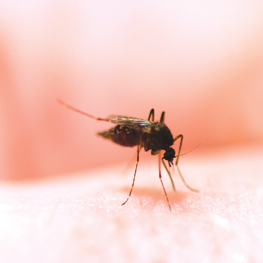
Ahhh, summer! The joy of being in the great outdoors once again seems endless. Yet the season brings an abundance of biting insects, ultraviolet sunrays and rash-producing plants.
When the exuberant squeals turn into screams of pain, most parents are well-versed in the standard treatment of these minor traumas: Ice, OTC pain relievers, lotions and anti-histamines. But these may take up to 30 minutes to kick in. Luckily, there’s a treasure trove of quick-acting treatment options right in the kitchen, and these home remedies can be used alone or in conjunction with the standards for great results.
Naturopathic Doctor Michelle Rogers of Earth Friendly Medicine explains, “The main advantages include fewer side effects, supporting the body’s natural ability to heal itself (which is essential for the maturing immune system), cost effectiveness and decreased environmental impact.”
Here are some household remedies for treating the unavoidable stings, bites and burns of summer:
Bee, wasp and hornet stings. A bee stings once, but leaves its stinger behind. Remove the stinger as quickly as possible. More venom is dispensed the longer it is left in the skin. Wasps and hornets do not leave their stingers behind and may sting multiple times, so leave the area before starting treatment!
Make a thick paste using water and one of the following ingredients:
• Baking soda
• Meat tenderizer (contains papain, which is said to break down proteins in the venom)
• Charcoal (the activated form is cleanest, but charcoal from a campfire can be used in a pinch)
• Honey (unpasteurized contains anti-bacterial agents)
• Dirt/mud
• Toothpaste (undiluted)
Apply directly to the wound. Leave on for 20 to 30 minutes.
Or try one of these plant-based items:
• Sliced onion
• Papaya (a natural source of the papain found in meat tenderizer)
• Plantain (a common back yard weed) ground into a poultice)
Leave on the wound for about 20 minutes.
Itchy bug bites. Many of the remedies used for stings (e.g. baking soda, charcoal and onion) may also be used to treat the itchy bites of insects such as mosquitoes, horse flies and black flies.
Additional remedies for itching include:
• Oatmeal bath
• Aloe cream (refrigerated for better itch relief)
• Green tea bag (dampened and refrigerated)
• Tea tree oil, witch hazel or alcohol (including hand sanitizer)
• Basil, crushed (repels mosquitoes and contains anaesthetic properties)
• Mouthwash with menthol (cools the bite site)
Sunburn. A cool bath is often the best way to relieve sunburned skin. Many believe in the addition of oatmeal, baking soda or vinegar as a soothing agent.
After a soak, try one of these home remedies:
• Aloe (best straight from the plant, but pre-made lotions are helpful)
• Shaving cream
• Milk or yogurt
• Potatoes (pulverized to a liquid, dried on the skin and showered off)
• Corn starch (dusted on non-blistered areas irritated by clothing straps or bands)
Poison ivy, poison oak, poison sumac. It is essential to wash well with soap and water to remove any oily residue from the skin. After that, a cooling bath can work wonders. Previously mentioned bath additives like oatmeal and baking soda work well to relieve itching. You can also try Epsom salts, buttermilk or mint tea as a soothing addition.
After dabbing the rash dry, try applying one of the following to dry the outbreak and speed healing:
• Oatmeal, baking soda or vinegar paste
• Watermelon rind
• Cucumber slices
• Lemon slices
• Banana peel
And nothing beats a bag of frozen veggies placed on the rash site for the ultimate cooling relief!
Emergency! When to seek medical attention
Rogers warns that “when it comes to stings, it is always essential to rule out anaphylaxis (severe allergic reaction) before turning to our home remedies.” Other severe medical conditions may also warrant treatment by a medical professional.
Call 9-1-1 immediately when any of these symptoms are present:
• Skin reactions (hives, itching, flushing) in areas other than the sting site
• Swelling of the mouth, throat and/or tongue
• Difficulty breathing
• Weak and rapid pulse
• Dizziness
• Nausea or vomiting
• History of dangerous reactions to stings (even if symptoms are not present)
Other reasons to seek medical attention:
• Multiple stings - When a person (especially a child) has been stung more than 10 times.
• Mouth stings - Swelling must be reduced quickly when a child is stung on the lips or inside the mouth so the airway is not affected.
• Mosquito bites that result in severe headache, neck stiffness or disorientation may indicate West Nile Virus.
• Blistering sunburn covering a large portion of the body.
• High fever or extreme discomfort.
• Failure to begin healing after several days.
Ashley is a freelance writer, and mother of two energetic boys. Her family likes to spend most summer days outdoors, amid insects and sun.
Calgary’s Child Magazine © 2024 Calgary’s Child